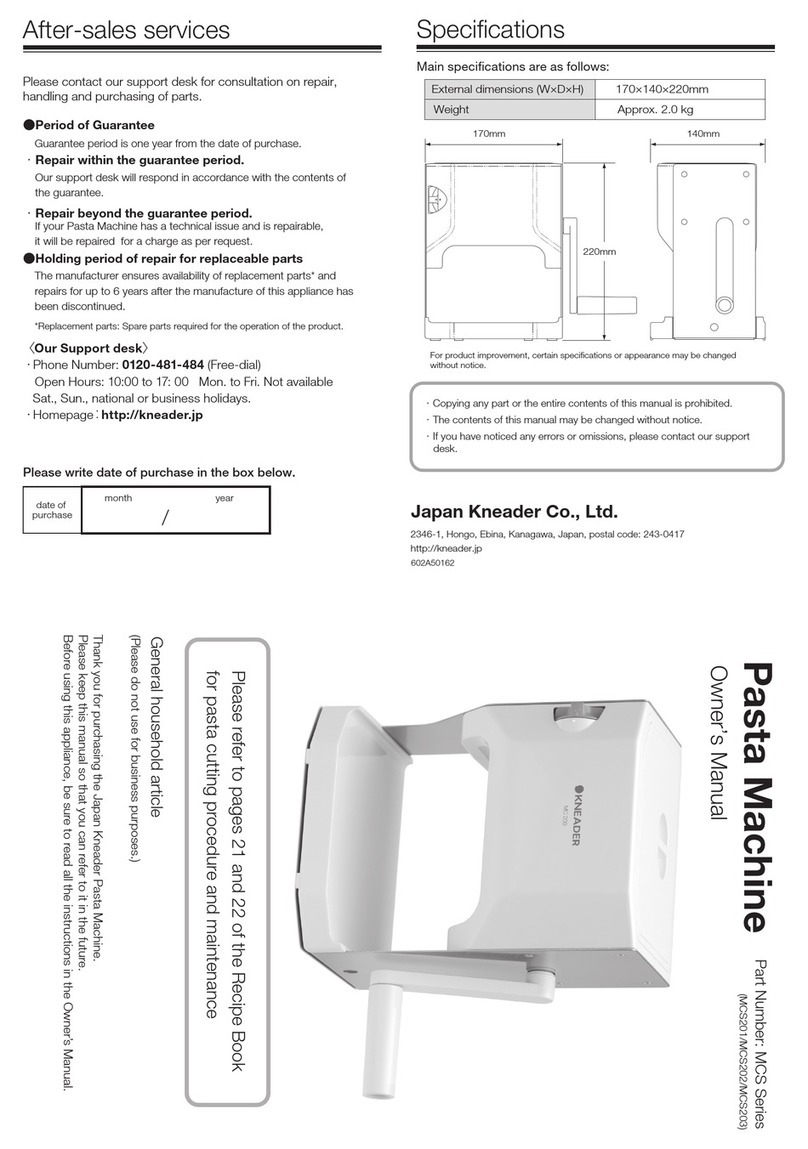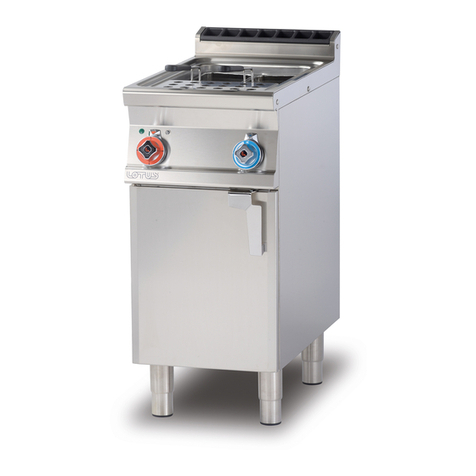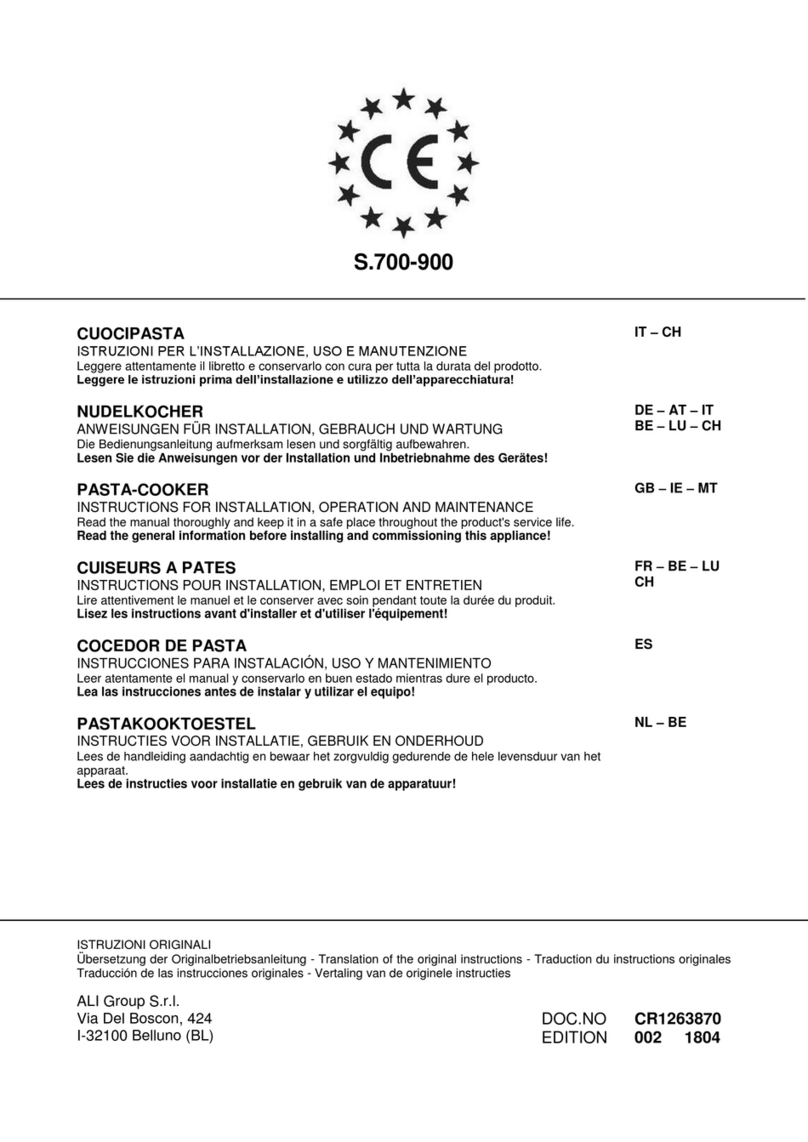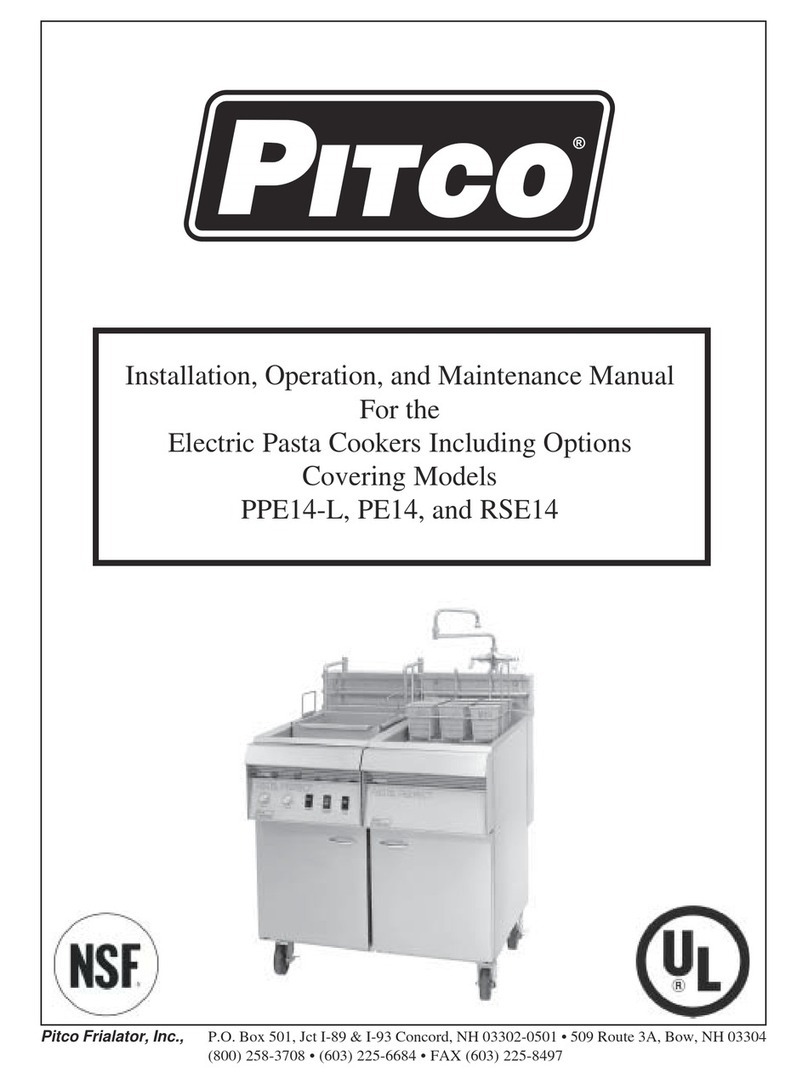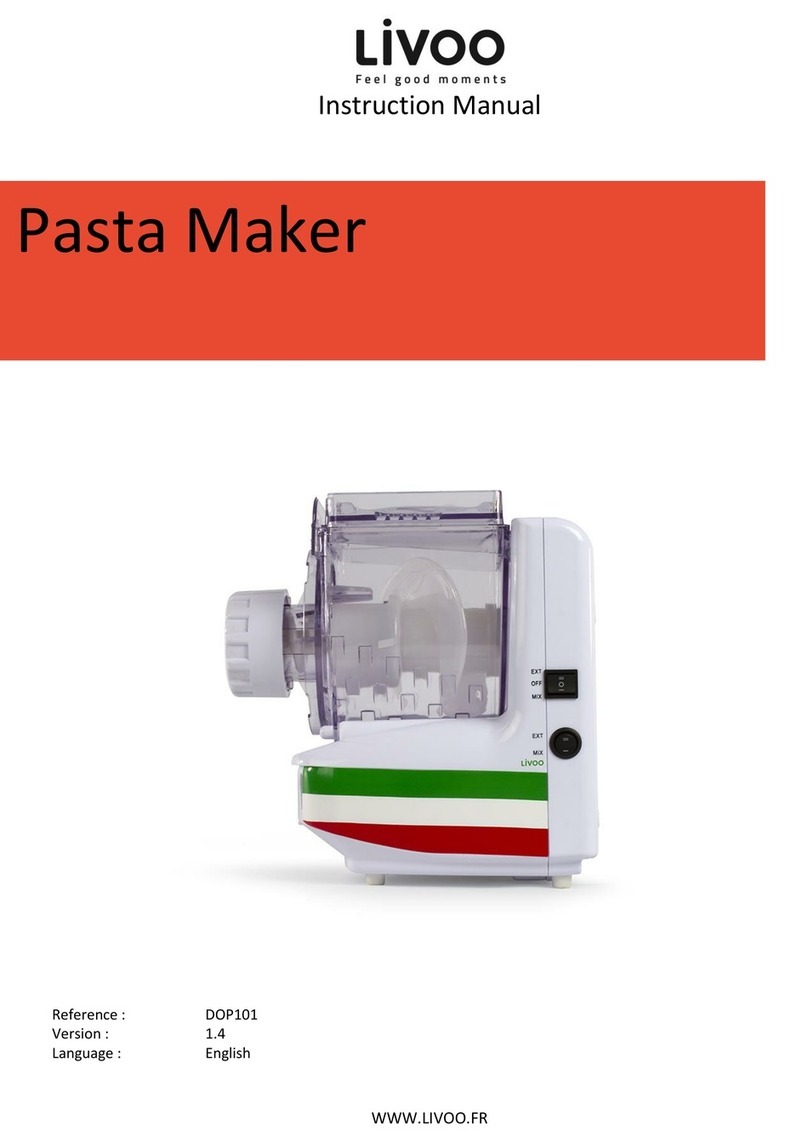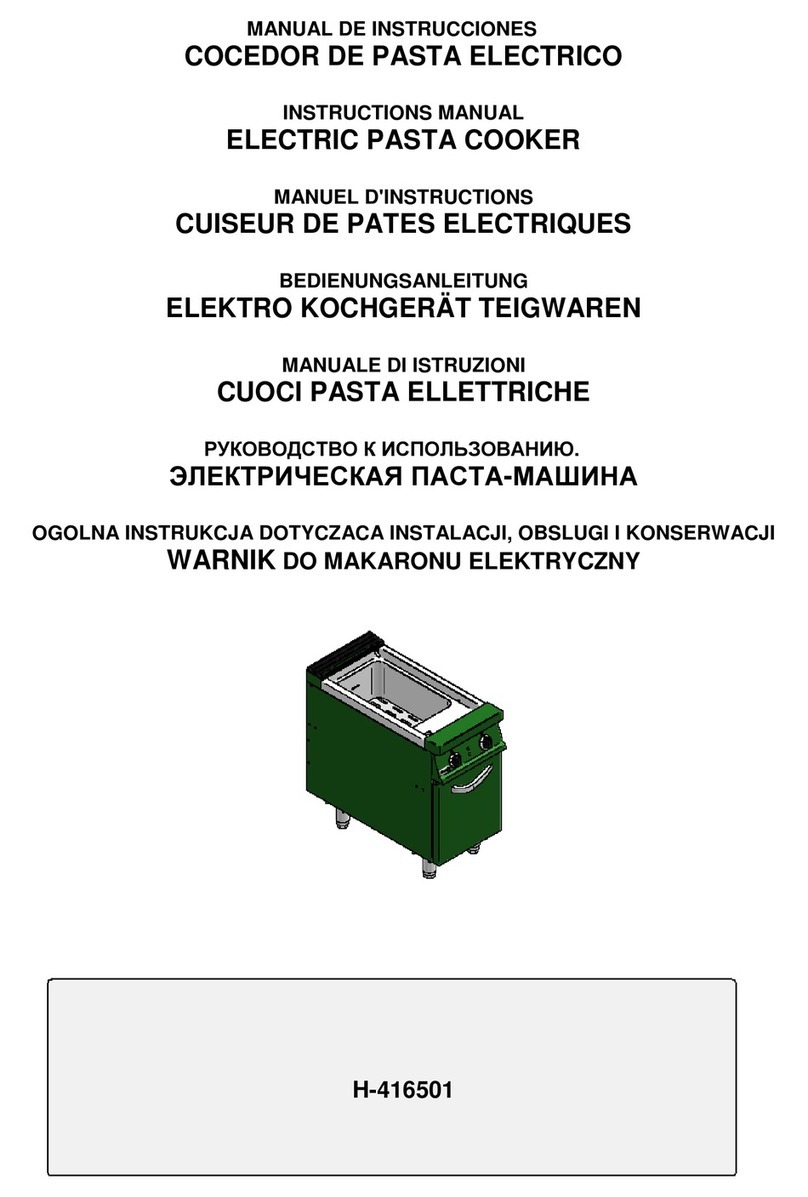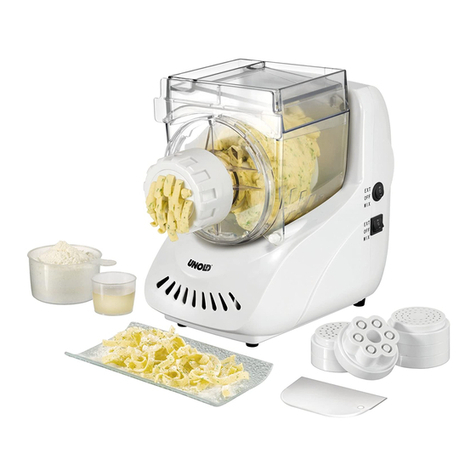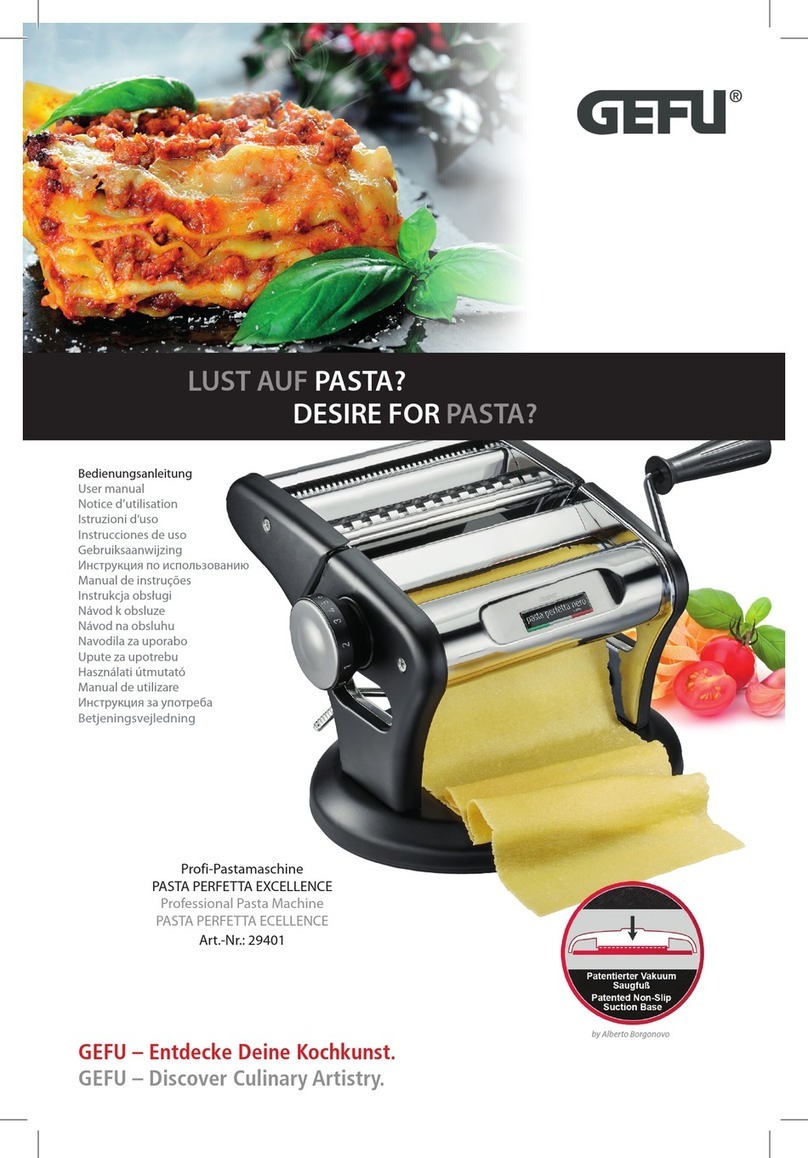Note – Whenever you fit or remove
the cutting assembly, always hold
the edge of the assembly in one
hand and twist the clamp ring with
the other.
to use your pasta maker
1Make your pasta mix following a
recipe supplied.
●Don’t make the mix too dry as it
could break your pasta maker or
mixer. It should resemble coarse
breadcrumbs or a coarse crumble
texture. The particles should be
separate but if squeezed together it
should form a clump which bonds
together.
2Switch the mixer onto speed 2-3.
3Place some of the mix onto the
hopper. Feed a small amount of mix
into the feed tube at a time. Allow
the scroll to clear before continuing.
If the feed tube becomes clogged
use the end of the spanner/pusher
handle to push the mix onto the
scroll (don’t use anything other than
the spanner handle and don’t push
too hard). Never let the feed tube fill
up.
4When the pasta is long enough,
move the handle on the cutting
assembly back and forth to cut the
pasta into the desired length.
Alternatively if the cutting assembly
is not fitted use a knife to cut the
pasta.
●To change dies remove the cutting
assembly. Always hold the edge of
the cutting assembly in one hand
and twist the clamp ring towards you
and remove. Remove the securing
nut (use the spanner/pusher to
loosen the securing nut if necessary)
and switch briefly to speed 1 to eject
the die. Remove the die and any
visible excess pasta and then fit the
desired die. Replace the securing
nut and cutting assembly.
warning
The pasta maker will get hot in use –
this is normal and is caused by the
pasta being compressed in the
attachment.
cleaning
Don’t wash any part in the
dishwasher.
dismantle the attachment
●Always hold the edge of the cutting
assembly in one hand and twist the
clamp ring towards you and remove.
Remove the securing nut, use the
spanner/pusher to loosen the
securing nut if necessary. Remove
the attachment from the mixer by
sliding the catch and pulling off the
attachment. Dismantle the parts.
dies
The Maccheroni rigati, Maccheroni
lisci and Bucatini dies can be pulled
apart to assist with the cleaning
process .
●Clean immediately after use,
otherwise the pasta will dry and be
extremely difficult to remove. Use the
cleaning tool to remove all the pasta
from the dies. The thicker end of the
tool is ideal for cleaning the larger
holes on the Maccheroni rigati die,
whilst the thinner end is suitable for
cleaing other dies. Wash in hot
soapy water, then dry thoroughly.
scroll
●Do not immerse in water.
●Wipe clean, then dry.
hopper, ring nut, body,
spanner, cutting assembly.
●Remove any pasta dough and if
necessary wash in hot soapy water,
then dry thoroughly.
3




